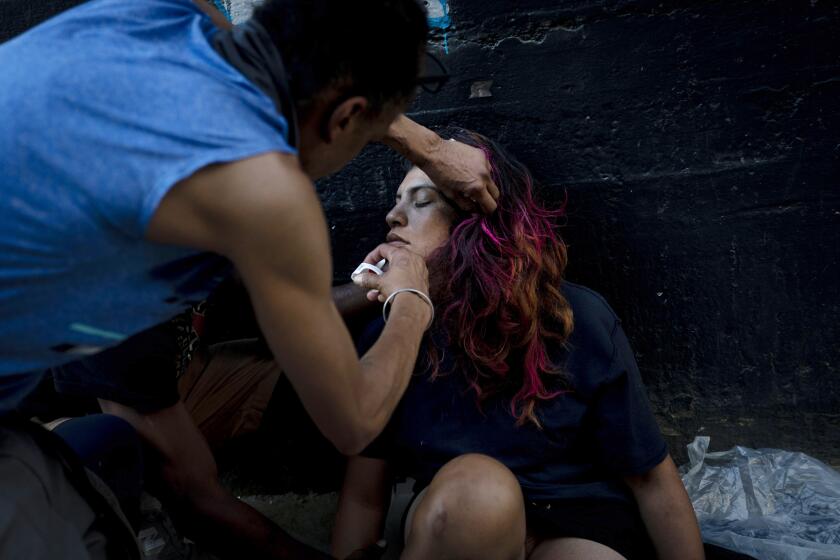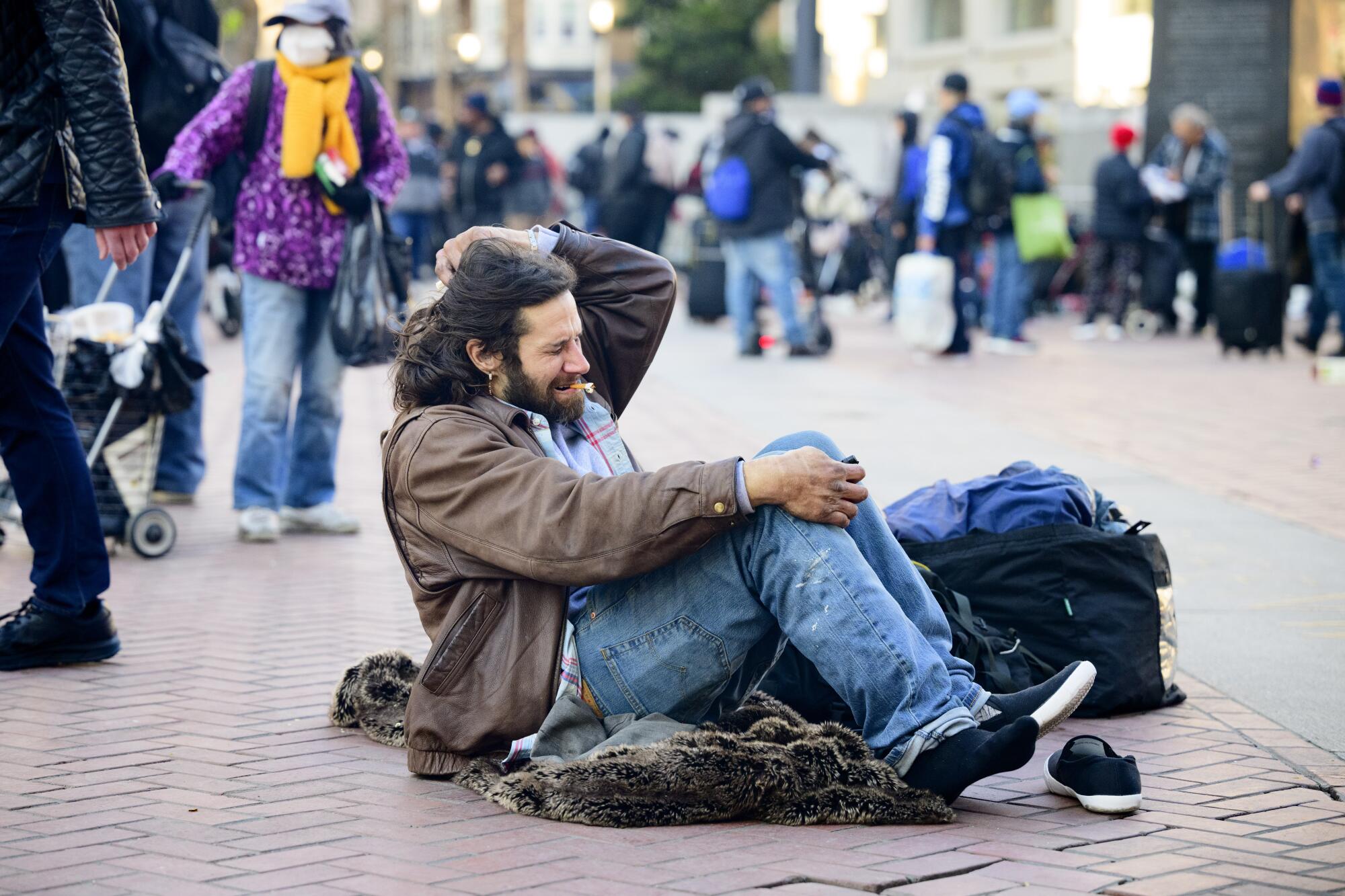
SAN FRANCISCO — Children and drug users filled United Nations Plaza by the Tenderloin on a recent Saturday afternoon, where up until a few weeks ago, the city operated an overdose prevention site.
Little girls in flowing costumes came spilling out of the nearby Orpheum Theater, high off the fantasy of magical royalty after a matinee of “Frozen: The Musical.”
They skipped by a man sprawled on the sidewalk eating a strawberry ice cream cone, aid workers handing out the overdose reversal medication Narcan and police halfheartedly rousting street vendors selling oranges, Christmas lights and cigarettes.
Those using illegal drugs weren’t hard to spot. They burned fentanyl and meth off squares of tinfoil, sucking the smoke through glass straws as parents pulled kids along, eyes averted.
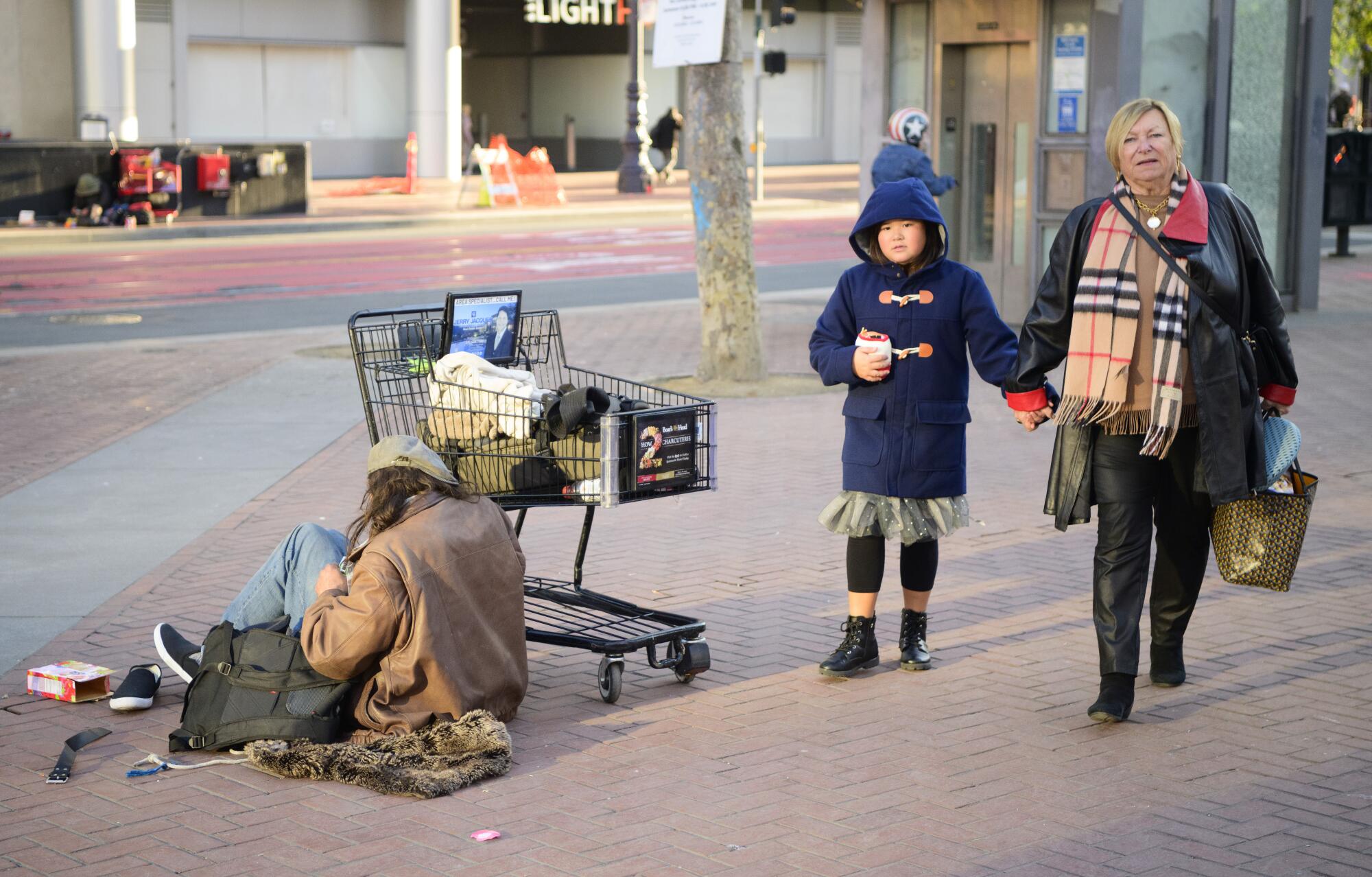
“It’s like you’re a disease,” Richard Okeefe told me as he rolled through in a wheelchair. He’s a former visitor to the overdose prevention site and an opioid user, and his feet are too swollen from congestive heart failure to walk. “You’re telling me my existence isn’t worth a hello.”
How you react to this description of a typical day in San Francisco — outrage or sorrow — probably sums up your view of safe consumption sites and our handling of the latest drug catastrophe to hit American streets.
As California leads the fight to reverse skyrocketing fentanyl overdose deaths, organizations that distribute overdose reversal drugs worry their increasingly bold efforts to save lives will land them in legal trouble.
Should we round up the users in the plaza, demand they enter treatment or go to jail? Would it be better to let them do drugs somewhere safe and out of the public view, until they choose to quit — or don’t?
Of all the polarities that divide our politics right now, these dueling responses to the opioid addictions of unsheltered people carry some of the strongest emotions. No one thinks the disaster playing out in places like the Tenderloin is acceptable, but there seems to be no middle ground on solutions.
And nowhere is that sorry truth playing out with more urgency or publicity than San Francisco, where the fate of overdose prevention in California will likely be decided in coming weeks by one woman — San Francisco Mayor London Breed.
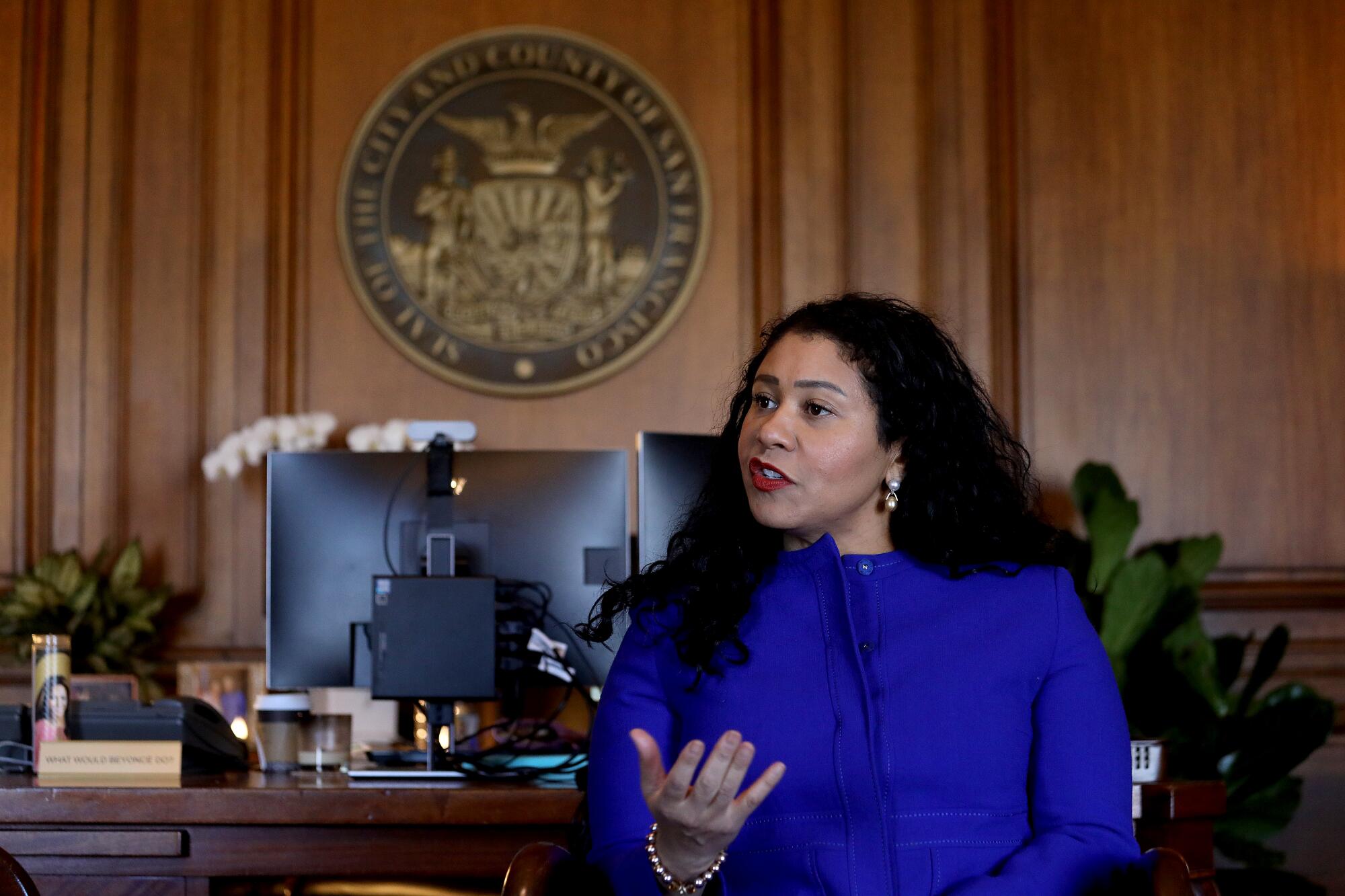
Breed is either going to buck state and federal law and the loud disapproval of the crackdown crowd to open another safe consumption site, or she’ll cave to mounting political pressure and won’t, which will likely kill the concept in the Golden State for the foreseeable future. This decision is a fork in the road, a commitment to one side or the other.
For years, Breed has said she supports overdose prevention sites, even as she closed this one down earlier this month. Two formidable women — Vitka Eisen and Lydia Bransten — are forcing the issue by holding Breed to her claims.
Since visiting Vancouver earlier this year, where overdose prevention sites have operated for decades, I’ve come to see that these facilities make sense, even if they are uncomfortable to witness. They aren’t a solution. They don’t treat addiction. But it’s false to say they encourage people to use drugs or to pretend you can’t have overdose prevention sites work hand-in-hand with treatment and recovery programs.
Overdose prevention sites are necessary because dead people can’t change — and because kids deserve to walk around without fear of stepping on needles.
More than 550 people have died of overdoses in San Francisco this year, according to a coroner’s report. About 107,600 Americans died of an overdose between July 2021 and June 2022, according to the Centers for Disease Control and Prevention.
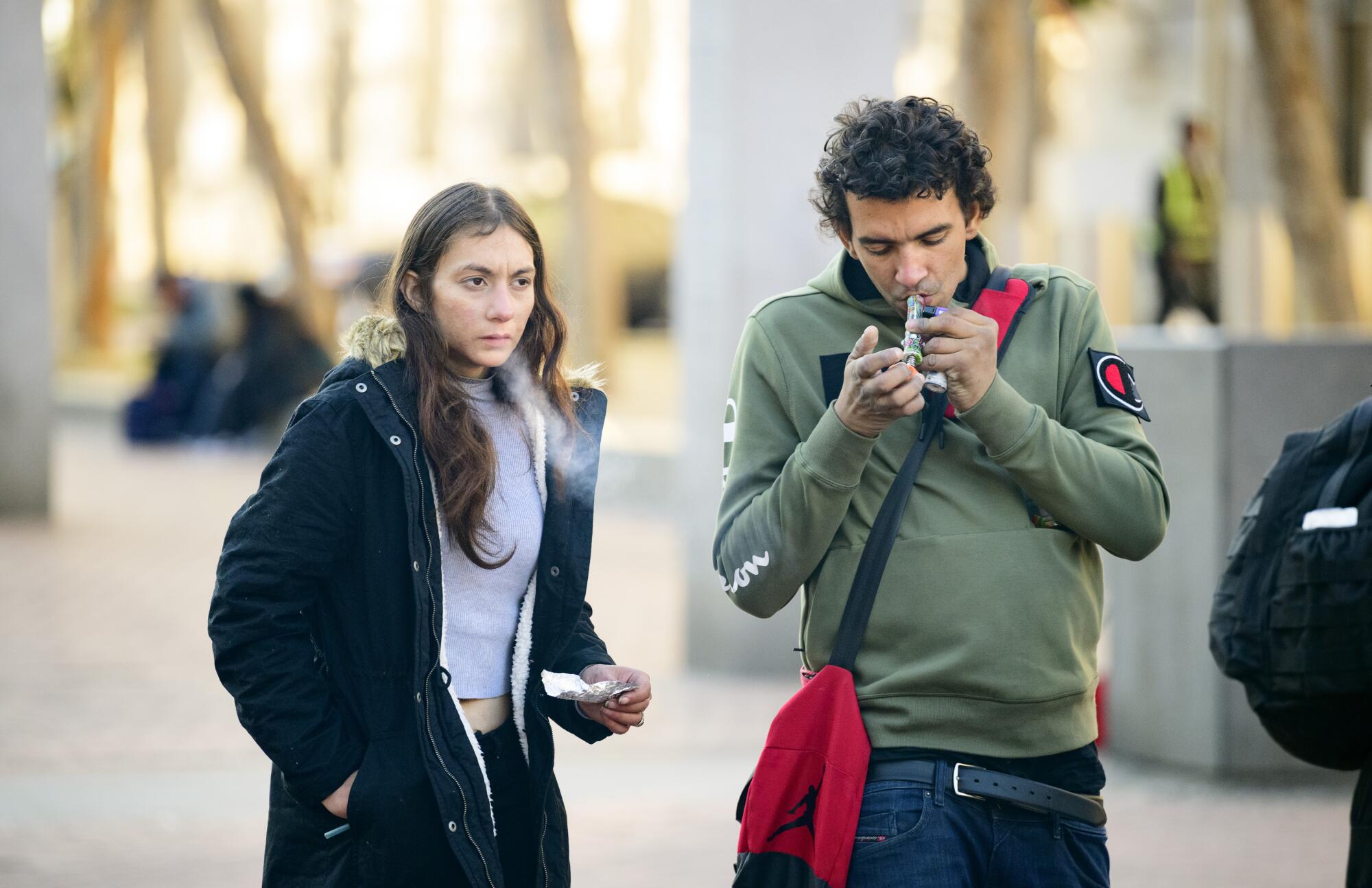
More than 330 overdoses were reversed at the plaza center, in a courtyard hidden from passersby. Sometimes all it takes is shaking a shoulder to rouse someone enough to remind them to breathe. Such a little thing to save a life, but someone has to be there to do it.
Though there has been talk of a similiar project in Los Angeles, it hasn’t been a priority for new mayor Karen Bass, who is focused on moving people off streets and into shelters and homes. She has goodwill from advocates, and it’s unlikely they would get ahead of her on such a volatile issue.
Outside of San Francisco and L.A., the concept of overdose prevention hasn’t roused much interest in California. A few months ago, Gov. Gavin Newsom vetoed legislation that would have allowed pilot sites in San Francisco, Los Angeles and Oakland, claiming the idea could spark “a world of unintended consequences.” Not many seemed to care.
“The governor obviously read the political winds,” Dean Preston told me. Preston is the San Francisco supervisor whose district included the overdose prevention site, and he’s a strong supporter of the concept. He thinks the same pressures and criticism that may have swayed Newsom are still “dominating the issue” here, though other places are moving forward.
New York has two overdose prevention centers, funded by nonprofits. Rhode Island has plans to open some.
In Philadelphia, a lawsuit that would clarify the federal position on overdose prevention sites has ambled forward for four years. Currently the sites are illegal, under what is known as the “crackhouse statute,” which was championed by President Biden when he was a senator battling the last drug epidemic.
Biden has moved toward harm reduction as president, but the U.S. Department of Justice has for nearly a year kicked the can on saying if it believes safe consumption sites are banned under the crackhouse statute. After asking courts for multiple extensions, it is now supposed to answer that question by early January.
The federal uncertainty and state disapproval provide both cover and concern for Breed, who is left handling this politically explosive issue largely by herself.
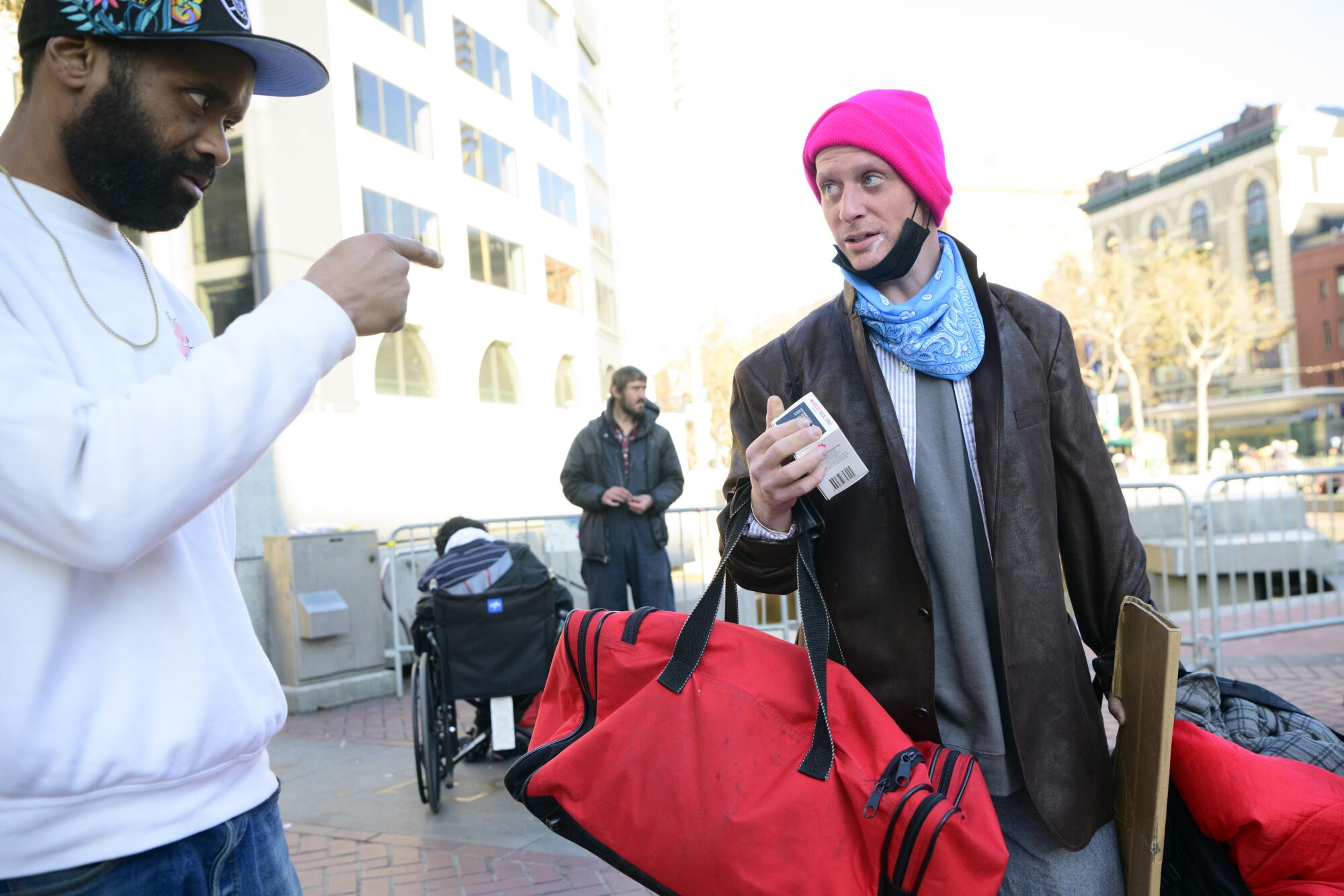
::
Eisen is a big reason Breed is in the hot seat.
A no-nonsense woman with short gray hair, Eisen always seems on the verge of either giving you a big hug or telling you to buzz off. She heads HealthRIGHT 360, which provides care and other services for very low income populations. Her organization was in charge of overdose prevention at the plaza. She personally ran that effort many days, and it’s because of her that people were allowed to smoke and inject drugs there.
“The mayor didn’t ask us to do that,” Eisen told me. “We just did it.”
Eisen began her insurgent campaign with concerns that visitors would use drugs in the bathrooms of what was considered a “linkage” center, meant to help people access services and housing, setting off smoke alarms or overdosing with no one to intervene. She suggested using outside portable toilets where it would be easier to notice if someone didn’t come out. And why not have Adirondack chairs so people were tilted back and could breathe better if they did OD? And if we’re doing this anyway, why not provide clean foil?
Within a month, Eisen slow-rolled into the country’s first city-funded, semi-approved-but-not-really overdose prevention site. Did Breed know? Yes, Eisen said. But it remained a don’t-ask-don’t-tell proposition.
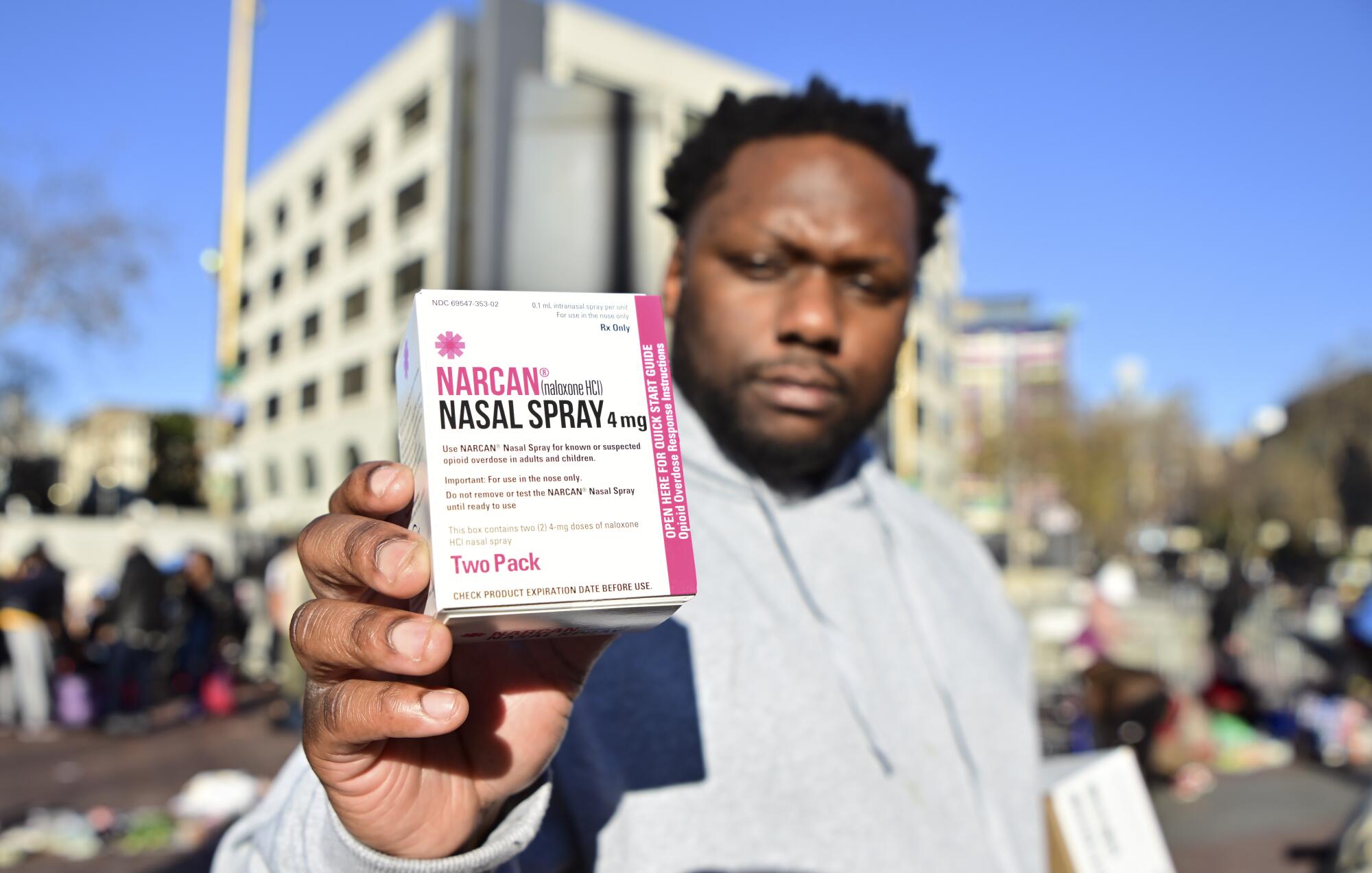
While Eisen was pushing boundaries inside the plaza, the world outside was changing, too. Weeks after she began her experiment, conservative provocateur and failed gubernatorial candidate Michael Shellenberger scaled the center’s fence, camera in hand. All hell broke loose on social media, fueling right-wing narratives.
With midterm elections closing in, Republicans began a national offensive claiming crime was out of control, especially in cities governed by Democrats. “Failed San Francisco” became a mantra for conservative commentators such as Tucker Carlson, and politicians up and down the state felt the heat of defending policies that were now labeled as being coddling and soft on crime — despite statistics that don’t bear this out.
Viral videos of shoplifting mobs grabbed attention, as did a never-ending supply of poverty porn featuring homeless people in dire circumstances. Fentanyl was a serial killer on the loose, especially as teenagers began dying from pills in bedrooms and schools.
All that became proof that compassion in the face of disaster was a fool’s response — or at least a loser at the polls. In November 2021, Breed had told media she was “determined” to open a safe consumption site.
“We have been wanting to do this for a long time,” Breed said at the time. “We have to get this site open.”
When she shuttered the very effort she had championed a year and a month later, Eisen and others wanted to know what had changed.
The answer was simple: Everything and nothing.
People are still dying, but the politics are different. A new War on Drugs is brewing, and even Democrats are buying in.
Enter Bransten, a blond who gives off stylish-mom vibes with bright blue glasses framing blue eyes. She’s head of the six-member Gubbio Project that provides homeless services in a wood-shingled Episcopal church where a crow named Theodore frequents the courtyard.
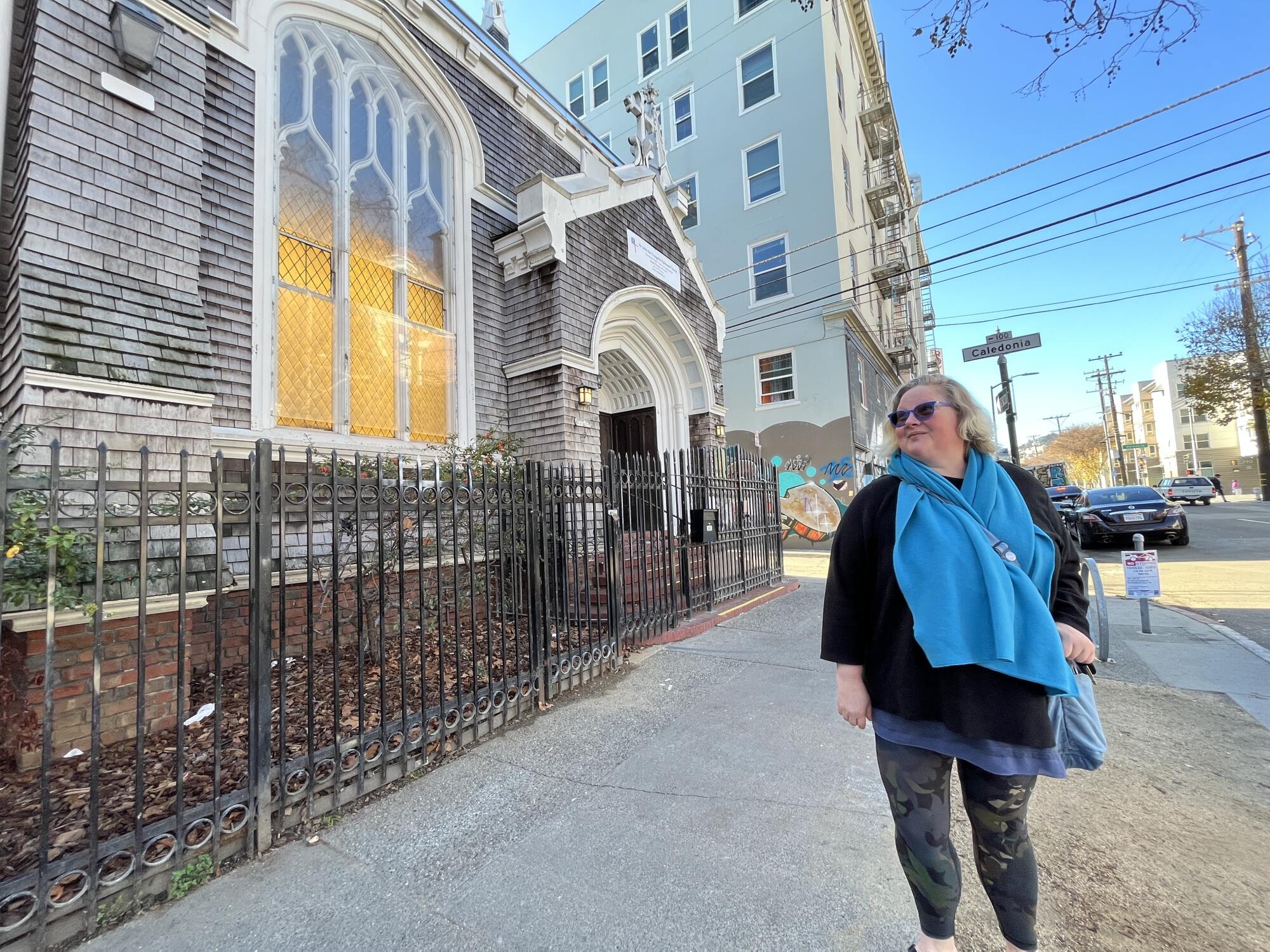
Bransten wants to open an overdose prevention site there — only if the congregation and neighbors agree — in a fenced-in parking lot where bougainvillea hangs near the cracked concrete. She would like the city to pay for it, but she’s fine with the New York model of nonprofit funding. She sees it both as an act of civil disobedience and of Christian faith.
Gubbio is an Italian city where St. Francis of Assisi made a deal with a gimpy wolf who was killing townspeople because he was hungry and they were trying to stop him from hunting their slow-moving sheep and goats. St. Francis made the wolf promise to stop terrorizing the townspeople, and, in return, they would feed him.
Bransten says she’s often asked who is the wolf and who are the townspeople when it comes to homelessness and drug use. Both, she says, are blinded by fear and the struggle to survive.
“It’s a story about finding commonality in community,” she told me. “We’re all the wolf, right? We’re all townspeople.”
::
For a while, Bransten said Breed seemed on board with her plan to open a new site at the church.
Then a few weeks ago, the Department of Public Health told her the idea was “tabled” at the order of the mayor’s office. Breed publicly continued to voice support, making Bransten fear safe consumption was about to die a quiet, backroom death.
“This was about to get buried,” Bransten said.
So Bransten went public, garnering headlines for calling out the mayor.
Breed’s communications director, Jeff Cretan, told me the narrative that Breed has done an about-face is “absolutely false,” and any suggestion that she is more concerned about her political future than lives is “ridiculous.”
The hesitation to open a safe consumption site is about the legal risk to city employees, he said, adding Breed supports a nonprofit-funded site.
“There’s an idea that this is like gay marriage, when Gavin Newsom defied the federal government,” Cretan said, referencing a month-long period in 2004 when Newsom, then mayor of San Francisco, ignored state and federal law to issue about 4,000 marriage licenses to same-sex couples.
“The is not an issue of the city getting sued and this not an issue of maybe having some government bureaucracy fight,” Cretan continued. “It’s about the people who work for the city, and that’s a real concern. We can’t be cavalier about that.”
I have empathy for Breed, who wasn’t available for an interview. A needle sliding into a vein isn’t as heartwarming as lovers kissing on the steps of City Hall.
If she puts herself out front on overdose prevention, she will take national heat, even from within her own party — even if the federal government signals it won’t intervene. It will be messy, as it always is when dealing with addiction. There is no political upside, only the promise of a right-wing pummeling.
But not everything is politics, even for a politician. Breed has dealt with addiction in her own family and knows its complications and pain.
Okeefe, the soft-spoken, intelligent drug user I talked to in the plaza, was clean for eight years before this relapse. He has a tattoo on his arm that reads “Faith, Hope, Love.” Faith he can kick this again, hope that someday he’ll have a family, a child to call him dad and love him.
But he has to survive long enough to get there. “We’re human beings. We’re not different,” he told me of the lost souls in the plaza.
We are all the wolf, and we are all the villagers.
London Breed doesn’t have to be a saint. But she does have to decide which she stands for: compassion or fear.
More to Read
Sign up for Essential California
The most important California stories and recommendations in your inbox every morning.
You may occasionally receive promotional content from the Los Angeles Times.
